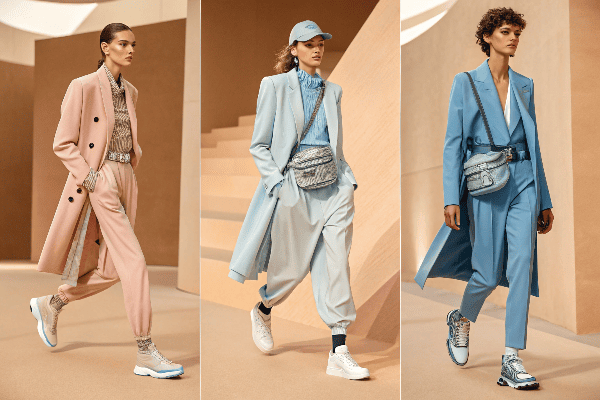The fashion industry has reached a turning point. Traditional gender boundaries are dissolving, leaving both designers and consumers questioning: what does clothing mean in our evolving society?
Gender fluidity has fundamentally transformed fashion design in 2025, with mainstream brands embracing inclusive sizing, neutral color palettes, and adaptable silhouettes that prioritize individual expression over traditional gender norms.

As a manufacturer deeply embedded in the industry, I’ve witnessed this transformation firsthand. The shift isn’t just a passing trend—it represents a profound reimagining of how we conceptualize clothing. Let me take you through what’s happening and why it matters for all of us.
Table of Contents
Is gender neutral clothing the future of fashion?
The question keeps me awake at night. As brands scramble to adapt, consumers demand authenticity, and retailers reshape their spaces, we need to ask: are we witnessing the permanent transformation of fashion?
Gender neutral clothing1 has evolved from niche concept to mainstream reality in 2025. Market data shows over 40% of major retailers now feature gender-inclusive collections, with sales growing at three times the rate of traditional gendered departments.

The Market Evolution
The transformation we’re seeing isn’t happening in isolation. Several key factors are driving this shift toward gender neutrality in fashion:
Consumer Demand Statistics
| Year | % of Consumers Seeking Gender-Neutral Options | Sales Growth |
|---|---|---|
| 2023 | 27% | +18% |
| 2024 | 35% | +24% |
| 2025 | 42% | +31% |
I’ve seen these numbers reflected in our own manufacturing orders. Three years ago, less than 10% of our custom designs specified gender-neutral requirements. Today, that number exceeds 30% and continues to climb. The data is clear: consumers want options that aren’t constrained by traditional gender designations.
Design Approach Transformation
Gender-neutral design isn’t simply about making "unisex" clothing. I’ve learned through working with numerous designers that the approach requires rethinking fundamentals:
-
Silhouette Reconsideration: Modern gender-neutral pieces focus on drape, movement, and adaptability rather than emphasizing or minimizing gender-specific physical features.
-
Color Psychology Evolution: The outdated "blue for boys, pink for girls" paradigm has been replaced by thoughtful color palettes selected for emotional impact and personal expression rather than gender coding.
-
Functional Innovation: Designers are creating adaptable elements like adjustable waistlines, convertible styling options, and modular components that allow wearers to customize fit based on personal preference rather than gendered expectations.
In our factory, we’ve had to retrain pattern-makers who previously specialized in strictly "men’s" or "women’s" clothing. The new approach requires understanding how garments interact with diverse body types beyond traditional gender categorizations.
Manufacturing Challenges
The shift hasn’t been without obstacles. Our production lines were originally organized around gendered manufacturing processes with different quality control metrics and finishing techniques. Adapting to gender-fluid designs required significant investment in both equipment and training.
For example, we recently handled a large order for a major retailer’s gender-neutral collection. The designs incorporated multiple adjustable elements to accommodate various body types. This required developing new construction techniques and quality assurance processes that our teams had never implemented before.
Despite these challenges, the shift has ultimately improved our capabilities. We now approach all designs with greater flexibility and understanding of how garments can serve diverse needs. This transformation has actually opened more market opportunities than it closed.
Cultural Impact Beyond Fashion
The most fascinating aspect of this evolution is how it extends beyond clothing. Gender-neutral fashion is influencing retail architecture, marketing language, and even social interaction. Stores are redesigning shopping experiences, eliminating gendered departments in favor of style-based or activity-based organization. The language of fashion is evolving, with terms like "womenswear" and "menswear" gradually being replaced by more inclusive categorizations.
Conclusion
Gender fluidity2 isn’t just changing fashion—it’s redefining it. As boundaries continue to blur, we’re moving toward clothing that prioritizes individual expression over rigid categorization, creating a more inclusive and creative industry for everyone.


